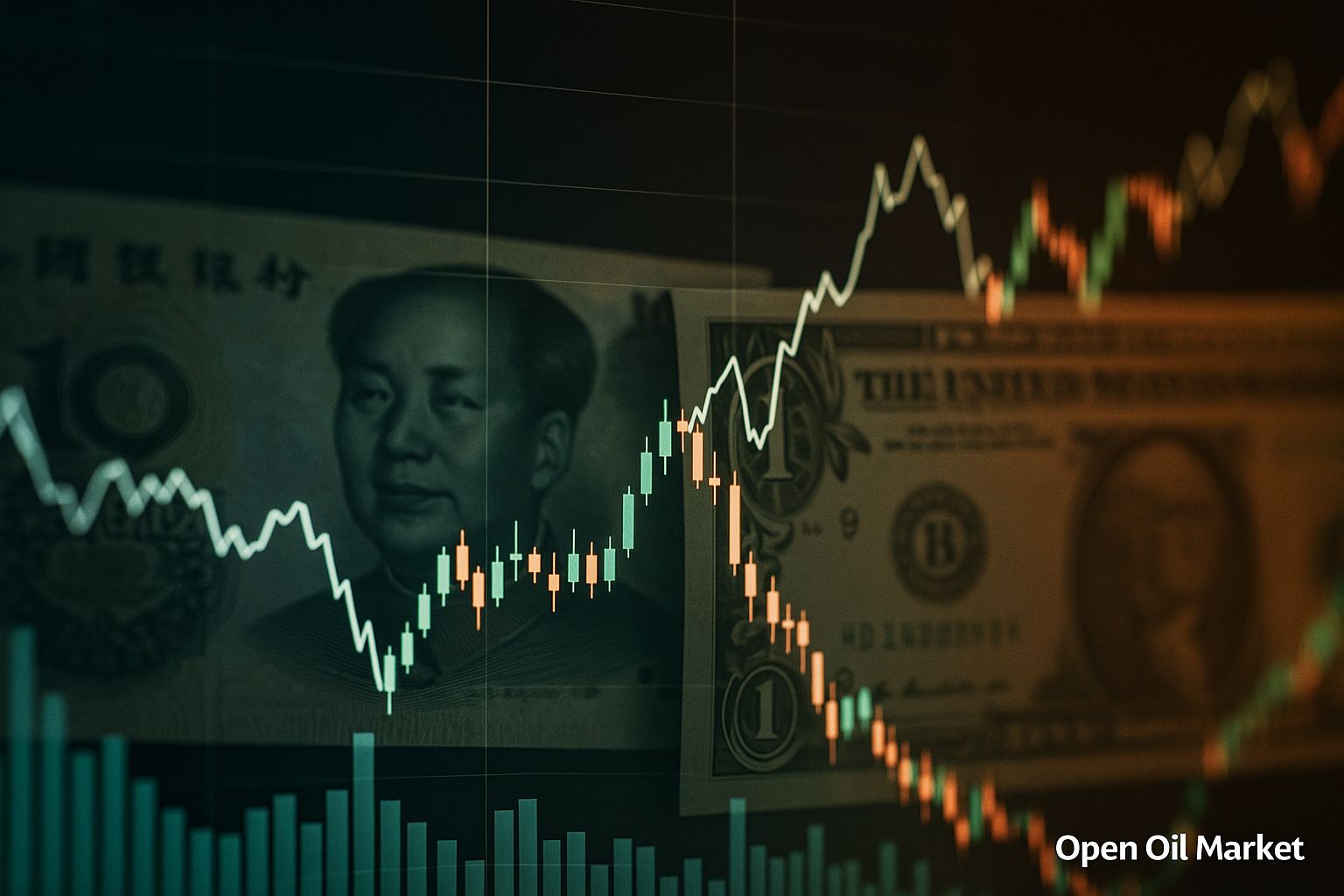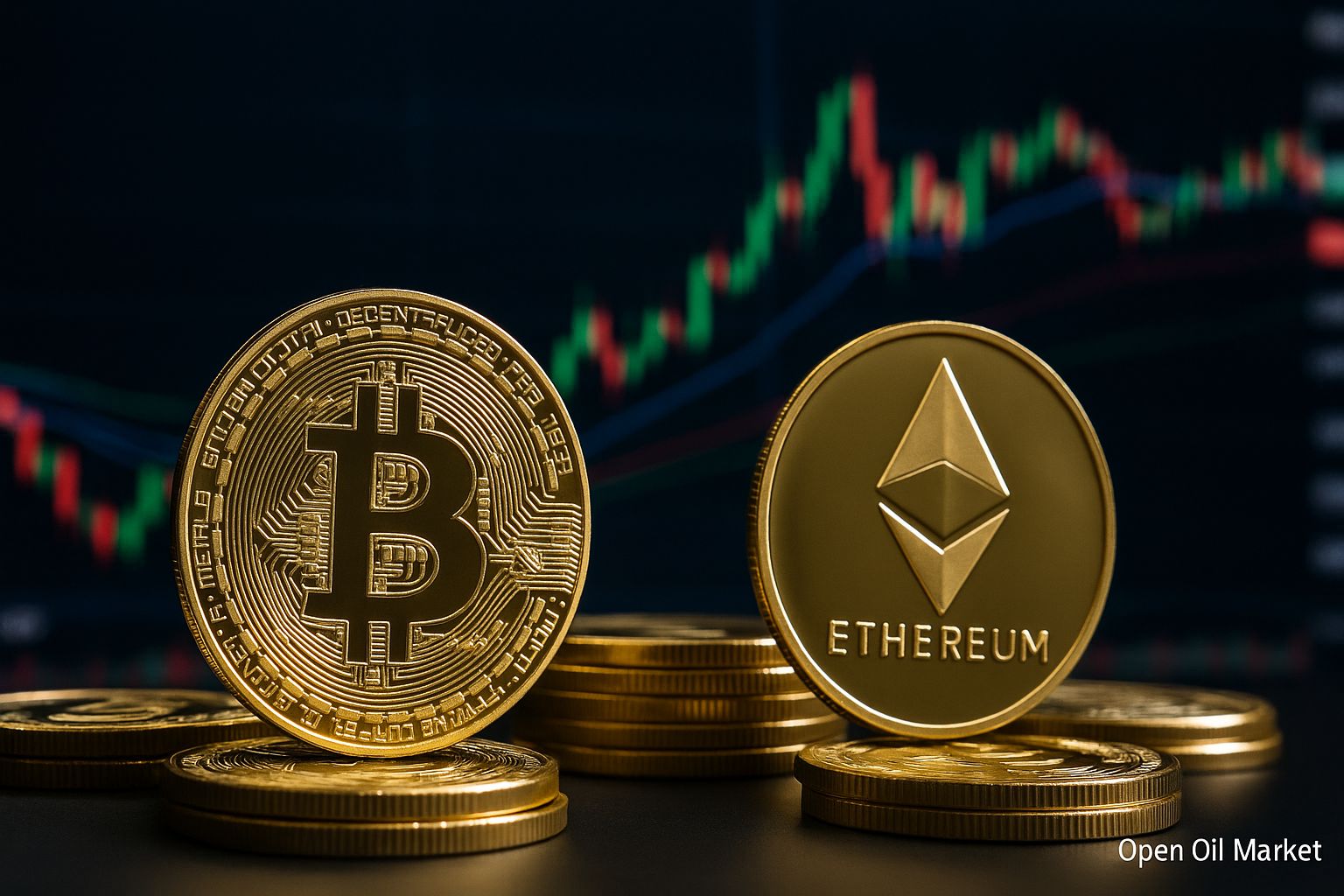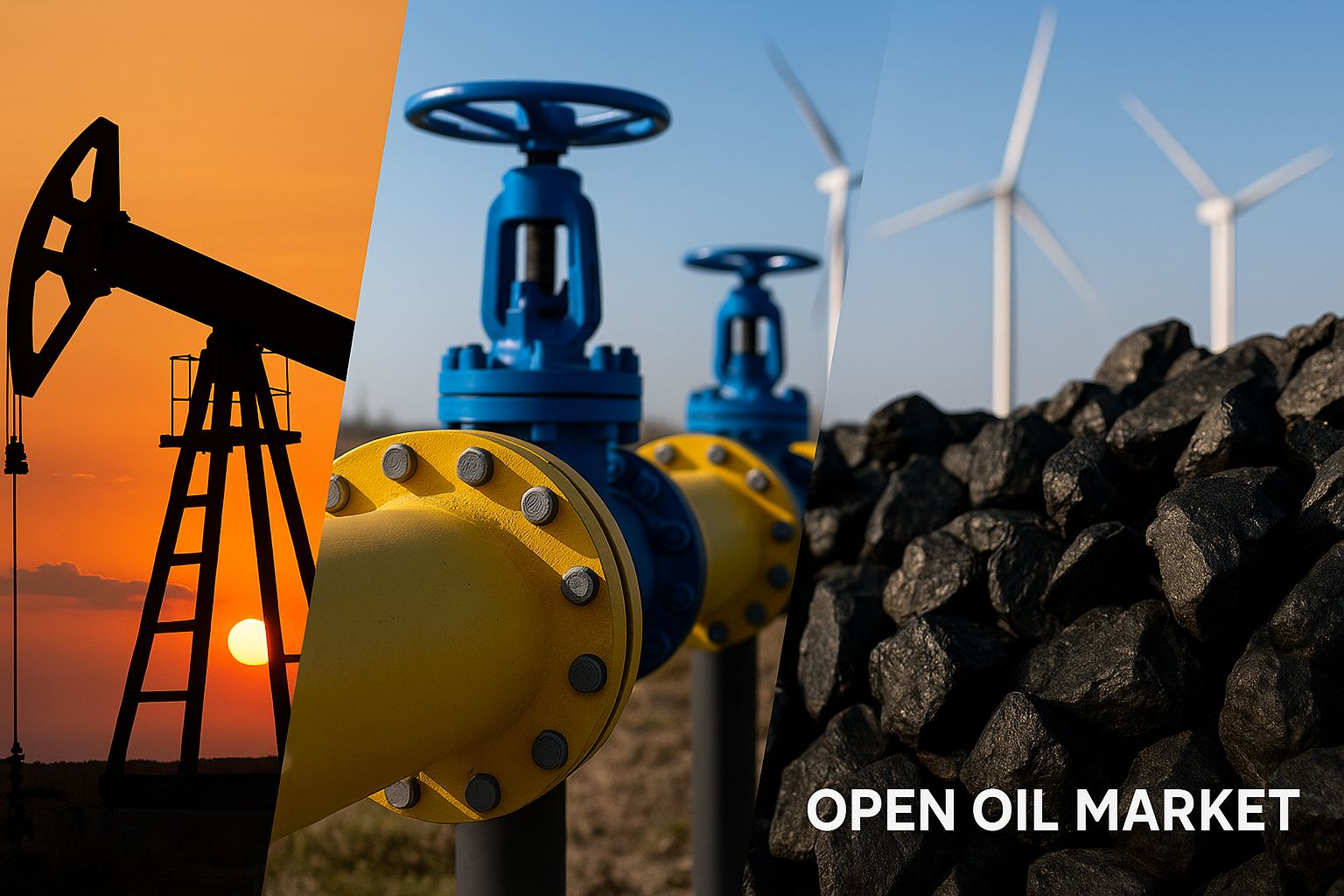
Comprehensive Overview of Economic Events and Corporate Reports for October 18, 2025: Outcomes of the G20 Meeting, Expectations for China's GDP Data, Commodity Market Situations, as Well as Corporate Reports from the USA, Europe, Asia, and Russia.
Saturday presents a relatively calm agenda for the markets: no major macroeconomic releases are scheduled for October 18, so investor focus turns to global factors. On a global scale, discussions revolve around the outcomes of the G20 finance ministers' meeting and the outlook for the global economy; in Asia, attention shifts to the forthcoming GDP data for China in Q3. The energy sector is closely monitoring oil price dynamics, which have fallen to recent lows due to surplus supply expectations, while the gas market remains stable in anticipation of the winter season. On the corporate front, the quarterly earnings season continues: in the USA, after banking results are published, attention will shift to technology giants; in Europe, early releases from luxury and technology sectors have set the tone; in Asia, the performance of a major chipmaker has been encouraging. Investors need to assess global trends as a whole: economic growth rates ↔ central bank policies ↔ corporate profits ↔ commodity prices ↔ overall risk appetite in markets.
Macroeconomic Calendar (MST)
- Weekend - no key macroeconomic indicators are scheduled to be released.
Global Economy: Outcomes of the G20 Meeting
- Resilience and Risks: The recently concluded G20 meeting noted the overall resilience of the global economy in the first half of 2025, yet highlighted several persistent risks. Key threats include geopolitical tensions, vulnerabilities in supply chains, high debt levels in certain countries, and climate-related factors. Despite these challenges, financial leaders expressed confidence in the ability of the global economy to avoid recession through appropriate policies.
- Macroeconomic Policy and Debt: G20 participants agreed on the necessity of stimulating macroeconomic policies to support long-term growth. There was a particular emphasis on addressing high levels of public debt: governments must seek a balance between fiscal sustainability and stimulus. Transparency in debt obligations and expanding cooperation with international financial organizations (like the IMF and the World Bank) were recognized as priorities in reducing crisis risks in emerging markets.
- Development Institution Reforms: The final summary of the meeting underscored support for reforms in multilateral development banks aimed at increasing their lending capabilities. It was proposed to more actively involve developing economies in decision-making processes to enhance access to funding for infrastructure and sustainable projects. The G20 aims to ensure that international financial institutions respond more effectively to global challenges and provide resources to emerging market countries.
China: Economic Growth Under Close Watch
- Expected Slowdown: At the beginning of the next week (October 20), China will release GDP data for Q3 2025. Analysts anticipate growth of around 4.5–5.0% year-on-year, which is somewhat below the previous quarter's figure of 5.2%. This potential slowdown is attributed to both a high base effect from last year and ongoing challenges in several sectors, particularly real estate and exports.
- Balance of Factors: Domestic consumption in China remains the primary driver of growth, bolstered by stimulus measures and improvements in the labor market. Nevertheless, investment activity is declining: the construction sector is experiencing a downturn, and private companies are cautious in light of regulatory measures. External demand is also weakened by the economic slowdowns in Europe. Conversely, the high-tech sector (for example, chip and electronics manufacturing) is displaying robust growth thanks to government programs and global demand for AI-related products.
- Market Implications: The upcoming Chinese GDP data will serve as an indicator for global commodity and equity markets. A stronger-than-expected growth figure could support prices for industrial metals, oil, and emerging market assets, signaling sustainable demand. Conversely, disappointing statistics may intensify discussions around additional stimulus from the People's Bank of China and the Chinese government, which could temporarily heighten volatility in the yuan, mining companies, and commodity currencies (AUD, NZD), while also generating hopes for increased stimulus, lessening the negative outlook.
Energy Markets: Oil at Lows, Gas Remains Stable
- Oil – Surplus Risk: Brent crude prices remain near multi-month lows (around $60–65 per barrel) due to expectations of surplus supply by year-end. The OPEC+ alliance confirmed a planned modest production increase starting in November (~+130,000 barrels/day), returning previously restricted volumes to the market. However, global demand is rising slower than forecast: the International Energy Agency (IEA) has reduced its estimate of demand growth for 2025 (~0.7 million barrels/day against earlier expectations of ~0.74 million) amid slowdowns in European and Chinese economies. Additionally, non-OPEC production (from the USA, Brazil, Guyana, etc.) is increasing at a faster pace. As a result, several analysts are warning about the likelihood of a return to oil surplus in Q4, which is exerting downward pressure on prices.
- Gas – Comfortable Supplies: The gas market situation remains favorable for consumers. The European Union enters winter with record-high reserves: gas storage facilities are filled to over 95% on average across the EU. Thanks to mild autumn weather and stable LNG supplies, wholesale gas prices in Europe remain low (the benchmark TTF futures at around €30 per MWh, significantly lower than the peaks of autumn 2022). The high level of reserves significantly reduces the likelihood of a recurrence of last year's price shock, even in the event of colder temperatures. For Russia, the redistribution of gas exports to the East (increased supplies to China via the "Power of Siberia," expansion of LNG exports) partially compensates for reduced shipments to Europe; however, overall exports are still lagging behind pre-sanction levels. Stable gas prices ease inflationary pressure on the European economy and provide breathing room for industrial consumers ahead of winter.
- Geopolitics and Sanctions: Risks of unexpected shocks in energy markets persist. Sanction pressures on Russia's oil and gas sector continue to grow: Western countries are discussing new restrictions (such as an embargo on Russian LNG purchases by 2026), which could reshape global supply configurations in the future. Meanwhile, shadow redistribution of flows (discounted oil sales to India, China, and the Middle East) enables Russia to maintain a large share of exports, albeit at discounted prices. Geopolitical factors also protect the market: any escalation in the Middle East or new incidents surrounding energy infrastructure (such as drone attacks) could quickly restore the "risk premium" in oil prices, despite the current bearish sentiment.
Other Regions and Indices: S&P 500, Euro Stoxx 50, Nikkei 225, MOEX
- S&P 500 (US): The quarterly earnings season is gaining momentum in the United States. The first wave of results from major banks displayed a mixed picture: record profits from interest income amid high rates (some banks, like **JPMorgan**, exceeded expectations), but weakness in investment banking areas. A notable positive was **Morgan Stanley**, which surprised with revenue growth and strong wealth management metrics, thus supporting financial sector stocks. Ahead are reports from technology leaders: next week, investors are awaiting results from **Netflix**, **Tesla**, and other "Big Tech" companies that could set the tone for the entire market. High expectations for the AI sector have already yielded excellent reports from chip manufacturer **TSMC** (profit growth and raised forecasts amid surging demand for AI equipment). Now, the focus is on the forecasts from American IT giants: maintaining revenue growth and margins could divert market attention from macroeconomic risks.
- Euro Stoxx 50 (Europe): European blue chips are just entering the active phase of Q3 earnings reports. The early results instilled optimism: French conglomerate **LVMH** reported a return to sales growth (+1% organic in Q3 due to revived demand in China), which spurred a rally in luxury sector stocks. Dutch chip lithography maker **ASML** also reported better-than-expected results and maintained a positive demand outlook, relying on the "chip boom" for AI. However, the overall economic conditions in Europe remain challenging: high rates and inflation are pressuring the construction and retail sectors, so market participants are carefully awaiting upcoming reports from banks (like **Deutsche Bank**, **Santander**) and automakers at the end of October. Their results and comments on demand will indicate how well the Eurozone economy is coping with an extended period of expensive capital.
- Nikkei 225 (Japan): In Japan, the corporate reporting season for the first half of the 2025 fiscal year (April-September) continues. A series of releases from industrial giants and consumer companies is expected. The weakening yen against the dollar (USD/JPY approaching 150) could support export-oriented sectors, enhancing the competitiveness of Japanese goods abroad and boosting currency revenues. Investors will keep an eye on results from automakers (such as **Toyota**, **Honda**) and electronics companies regarding profit growth from exports. Domestic demand in Japan shows moderate recovery due to rising wages and government stimulus, which may reflect in retailers' reports. Overall, Japanese corporate profits are expected to grow by single digits on average, confirming the gradual emergence of the economy from a deflationary scenario.
- MOEX (Russia): In the Russian market, the period for publishing operational results from the summer months is coming to an end. Transport and energy sector companies have disclosed data for Q3: for example, airline holding **Aeroflot** reported a decrease in passenger traffic over the summer amid high base effects from last year, while several oil and gas companies reported stable production despite export restrictions. Differentiation is observed in retail: food chains continue to increase revenue at double-digit rates, while non-food retailers feel a cooling of consumer demand. The main wave of financial reports for the first nine months is expected closer to November, and investors are already factoring in possible dividend surprises. External factors (fluctuations in oil prices, the ruble exchange rate near 80-85 per dollar) remain crucial for the Russian equity market. The MOEX index is holding within its range, as inflows of domestic liquidity and strong results from certain exporters offset the geopolitical risk premium.
Day's Summary: Key Takeaways for Investors
- Global Signals: The G20 summary simultaneously highlighted the resilience of the global economy and the presence of risks (debt, conflicts). For investors, this means that the macro outlook remains uncertain. It is essential to pay attention to central bank rhetoric: any hints at policy tightening or, conversely, readiness to support the economy could significantly alter market sentiment, especially against a backdrop of high global debt.
- Chinese Data: Upcoming GDP statistics from China could be the main driver for the start of the new week. If growth slows more than anticipated, a brief decline in oil, metal prices, and emerging market currencies could occur. Conversely, strong data would support commodity company stocks and Asian markets. Investors focused on EM assets should be ready for increased volatility surrounding these figures and consider hedging risks if necessary (for instance, through futures or options strategies).
- Oil Prices: The drop in oil prices to yearly lows is a factor that can both help and harm portfolios. For oil importers (airlines, chemicals, transportation), this is positive as it lowers costs. However, for the energy sector and commodity currencies (ruble, Canadian dollar, Norwegian krone), cheap oil exerts pressure. Investors are advised to assess the share of energy assets in their portfolios: it may be prudent to temporarily reduce exposure to oil & gas or shift investments to companies with more predictable margins. It is also important to monitor OPEC+ statements: in case of a significant price drop, the alliance might hint at a correction in production plans, which could immediately revamp the market.
- Corporate Reports: The earnings season has the potential to shift the market's focus from macroeconomic factors to corporate stories. In the upcoming sessions, results from major American IT giants will take center stage — their demand forecasts, profitability, and margin outlooks will set the tone for the technology sector worldwide. For European investors, it's crucial to assess reports from banks and industrial leaders regarding income sustainability amid stagnant Eurozone economic conditions. In Russia, there is attention on dividend plans from exporters based on the first nine months: any positive surprises could attract additional capital inflows to the local market. Overall, now is a good time to reassess specific stocks in one’s portfolio: whether to hold shares whose fundamentals are beginning to deteriorate or better reallocate funds into sectors benefiting from current trends (for instance, in favored growth segments for AI demand, or alternatively, into defensive sectors with high yields).
Markets for October 18, 2025: Cryptocurrencies, Commodities, and Currencies
Cryptocurrencies: Bitcoin (BTC/USD) is consolidating around $120,500, gaining +1.2% over the past day. The benchmark cryptocurrency remains near historically high levels, demonstrating relative stability amid a decline in volatility. Ethereum (ETH/USD) is trading around $7,500, virtually unchanged for the day. The total market capitalization of crypto assets stands at $3.3 trillion, with sentiment indicators reflecting moderate optimism among investors in digital assets.
Stock Indices and Futures:
- Shanghai Composite: 3,610.45 (−0.42%)
- Hang Seng Futures: 24,730.0 (−0.68%)
- Nikkei 225 Futures: 43,800.0 (+0.20%)
- Euro Stoxx 50 Futures: 5,480.0 (+0.35%)
- S&P 500 Futures: 6,512.50 (+0.15%)
Commodity Prices:
- Brent Oil: $63.10/barrel (+0.10%)
- Natural Gas (Henry Hub): $3.105/MMBtu (−0.05%)
- Gold: $3,350.50/ounce (−0.40%)
- Silver: $37.50/ounce (−1.12%)
- Copper: $4.500/pound (+0.20%)
- Nickel: $1,280.0/ton (−0.50%)
- Aluminium: $2,600.0/ton (+0.30%)
Forex Market:
- EUR/USD: 1.1650 (+0.02%)
- GBP/USD: 1.3455 (+0.17%)
- USD/JPY: 150.10 (+0.08%)
- USD/CAD: 1.3760 (−0.05%)
- USD/CHF: 0.8180 (+0.10%)
- AUD/USD: 0.6430 (−0.05%)
- NZD/USD: 0.5925 (−0.20%)
- EUR/GBP: 0.8660 (-0.15%)
- GBP/JPY: 202.20 (+0.10%)
Chinese Yuan and Russian Ruble Rates: USD/CNY — 7.250; USD/RUB — 82.50. The dollar/ruble pair has slightly strengthened compared to the levels at the beginning of the month, reflecting the drop in oil prices and demand for risk assets. Nevertheless, the ruble remains significantly stronger than the peak levels of summer, supported by high domestic interest rates and exporter sales of currency revenue.
Analysis: Global markets are exhibiting mixed dynamics over the weekend: American and European futures are moderately up amid optimism surrounding corporate results, while Asian indices are partially down due to concerns over growth rates in China. Oil prices remain under pressure due to the prospects of surplus supply, which weighs down commodity sectors and exporter currencies. Gold, which reached new highs in recent weeks, has pulled back below $3,400 per ounce amid consistently high real bond yields — investors are locking in profits in safe haven assets. The foreign exchange market is relatively calm: the US dollar is consolidating after recent strength, with small gains observed for the euro and yen due to declining US Treasury yields from recent peaks. Overall, investor sentiment is neutral: the market is awaiting new triggers (such as statistics from China and reports from top companies) to determine further directional movement. For now, participants tend to avoid any drastic moves, maintaining balanced positions and closely analyzing incoming information.




